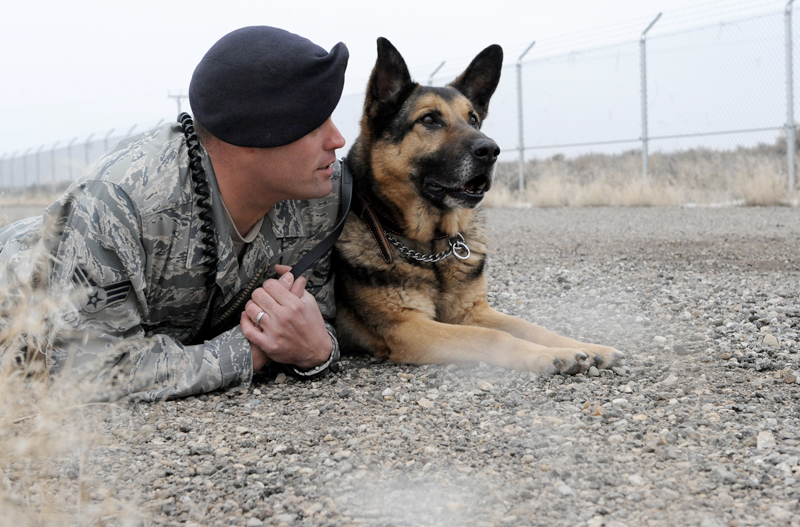
Although canines were used in warfare throughout history, the United States did not use dogs until after World War I because no formal program had been established for training dogs. Surprisingly, the push for the U.S. military to use dogs came from influential dog breeders. They formed groups in the late 1930’s and early 1940’s to contend for such a program.
 A more famous group, Dogs for Defense, with assistance from the American Kennel Club, formed right after the assault on Pearl Harbor with the purpose of promoting, coordinating, and financially assisting in the development of a sizeable trained canine force. This greatly assisted the military in beginning its program.
A more famous group, Dogs for Defense, with assistance from the American Kennel Club, formed right after the assault on Pearl Harbor with the purpose of promoting, coordinating, and financially assisting in the development of a sizeable trained canine force. This greatly assisted the military in beginning its program.
The Quartermaster Corps of the Army, which acquired horses and mules, seemed to be the logical department to take on this new program. Colonel Russell A. Osmun, Chief of the Plant Protection and Public Relations Branch of the Office of the Quartermaster General, had been interested in in using dogs in the Army. Col. Osmun took the lead in implementing the training program for dogs to serve on guard duty at the Quartermaster installations on the West Coast.
The first East Coast military establishment to receive sentry dogs was Fort Hancock, N.J. Commanding officer General F.S. Gage reported that, because the base was practically blacked out at night, having a sentry and a dog was like having two sentries on guard.
The War Dog program, organized by James M. Austin in 1943, provided relief to the financial burden assumed by Dogs for Defense. This patriotic and enormously popular new program called for public donations which led to the dogs getting honorary ranks, such as seaman or private, based on the amount donated.
Founded at Front Royal, Va., the first War Dog reception and training center opened in August 1942. Originally, the center provided training for 200 men and 500 dogs – but the vast flood of incoming dogs pushed the numbers to 400 men and 900 dogs by June 1943. More than 11,000 dogs, most of which came from the Dogs for Defense program, were acquired by July 1943. Other reception and training centers were developed after that.
Today, more than 1,300 dogs from each branch of service receive training with the 341st Military Working Dog Training Squadron at Lackland Air Force Base in Texas.
There are about 1,200 dog teams working in Iraq and Afghanistan. Improvised explosive devices (IEDs) have caused about 50 percent of the deaths of coalition troops and dogs killed in action there. Yet with dogs on duty, the IED detection rate is as high as 80%.
In the spirit of Service, Not Self, the mission of the American Legion Auxiliary is to support The American Legion and to honor the sacrifice of those who serve by enhancing the lives of our veterans, military, and their families, both at home and abroad. For God and Country, we advocate for veterans, educate our citizens, mentor youth, and promote patriotism, good citizenship, peace and security.